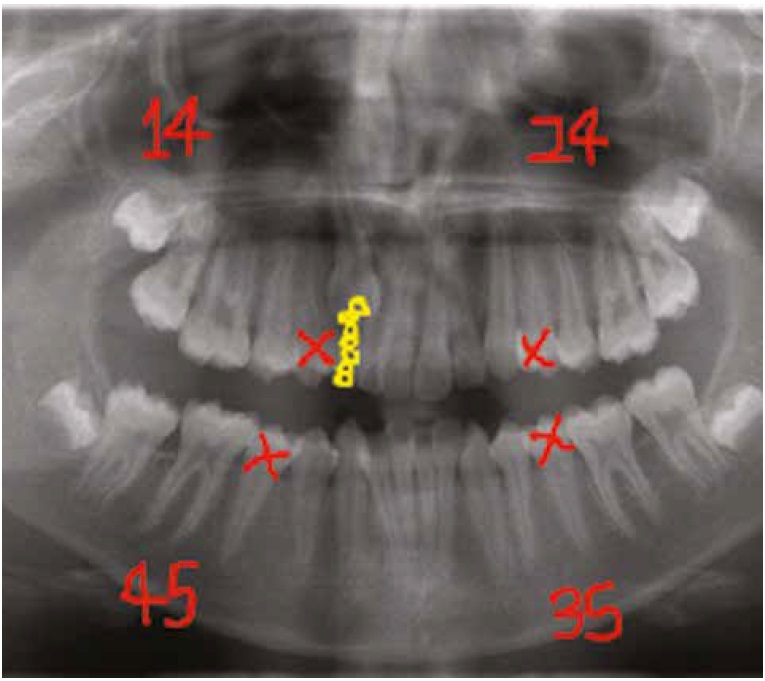Article
Orthodontists routinely refer orthodontic patients to either their General Dental Practitioner, for extractions, or to the Maxillofacial team, for extractions plus various surgical procedures.
The General Dental Council states that, if you ask a colleague to provide treatment, you should make the request clear and give your colleague all the information he/she needs.1
The Orthodontist's referral will usually take the form of a letter describing the procedures required supplemented by a dental charting. It is always helpful to include a copy of the OPT radiograph with the referral letter to provide the clinician with all of the necessary information to perform the procedures safely.
Chesterfield Royal Hospital Orthodontic Department has enhanced its referral communication by providing not only a clear and accurate referral letter, with all the necessary information, but also by providing an annotated OPT (Figure 1).

This pictorial communicative technique is extremely effective in ensuring that the clinician has fully understood the procedures that are required. This aids the informed consent process and acts as a good visual aid for patients and their General Dental Practitioners. The referral OPT is also displayed alongside the procedure written on the theatre display board and acts as a visual reminder, not only to the clinician but also to the rest of the theatre staff, potentially preventing catastrophic surgical errors being committed.
The use of an OPT pictorially displaying the procedures required is extremely useful for the clinician receiving the referral and theoretically reduces the risk of errors at every stage of the referral process. It forms part of the notes, providing a permanent visual reminder of the referral request and the procedures which were carried out.
Summary
At Chesterfield Royal Hospital the Maxillofacial Department staff have found the annotated OPTs to be incredibly useful throughout the whole referral process and their routine use for all Orthodontic referrals is strongly recommended. Their use will provide the clinician with all the necessary information and will potentially reduce the risk of clinical errors, thus ensuring patient safety at every stage of the referral process.
